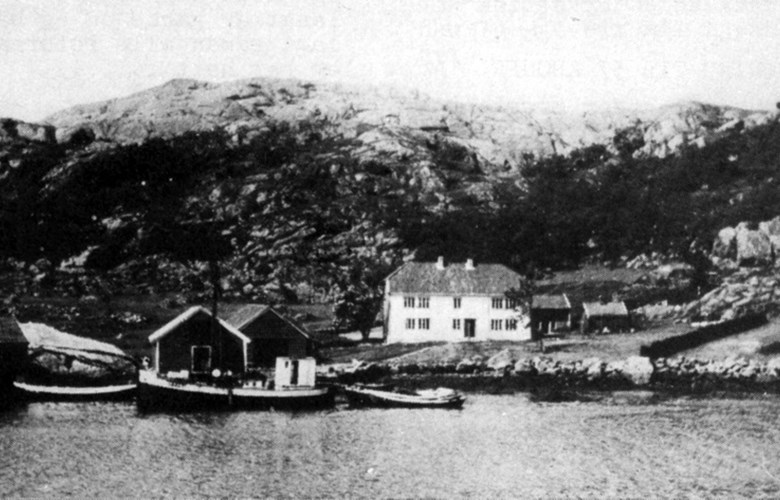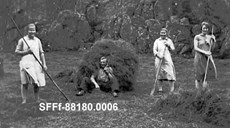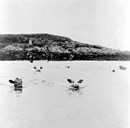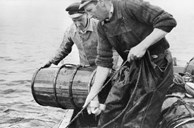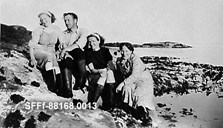Less time spent on the farm in the west
Because of the geography of Solund, it was only natural for people there to make their living from both the sea and the land. From time immemorial, shoals of herring and other fish were watched over and exploited, but at the same time, it was vital to have the small farm to fall back on. On the small, flat islands farthest to the west, they worked quite small patches of land, yet they were able to feed surprisingly many animals. On the larger islands farther to the east, there were larger fields, better grassland, and better field conditions. People had settled in places where the harbour could provide small boats with shelter. Fish was everywhere, but the assortment, size, and quantities were better in the west.
The farm was a tie for people
The many-sided operations differed in scope, depending on financial resources, geography, and what nature had to offer. While people in the west were close to good fishing grounds and made most of their livelihood with sail and oars, the farm was more important in the east. But at the same time, the farmers were more tied by the land, spent less time at sea, and needed more manpower to cope with the work.
The average number of cows on a farm was about the same in the west and in the east. In winter and in spring, the women were busy with the heather sickle. In the west nourishing spring sea kelp was an easier supplement.
Many-sided work
A number of the properties in Solund had annual drifts of herring and mackerel coming close to the shore, and watching the fishing grounds had high priority over the farm work. Even the hay and grain harvests were postponed.
In spring, summer, and early autumn, seine boats were at the sea warehouse ready to catch herring or mackerel at a moment's notice. Trained eyes interpreted any signs from plankton or seabirds.
It was important as well to watch the salmon seines closely. This job was shared among the neighbours. Children and grandparents trolled for fish and pulled the nets, so there was always enough to eat. As soon as there was enough bait, a longline was set. Around each table, there were many more hungry mouths than today.
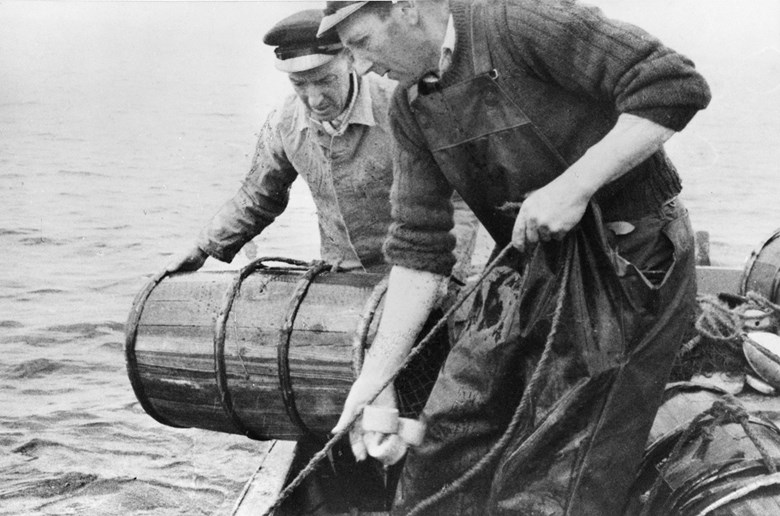
The women take command in the wintertime
By Christmas, the fat herring seines had to be repaired and prepared. And the boat had to be put in the water to swell watertight. It was indeed enough work to keep the boat dry of the water from above. Their accommodation, i. e. the vessel which lodged the master seiner and the crew during the winter herring fisheries, was used only rarely at other times of the year. Now the deck, at least above the berths, had to be watertight. The engine had to work in case of an emergency. Some had treated themselves to a motor gable. In the cabin, there was usually room for 4-5 of the crew. From Christmas onwards, they preferred to be in the place where they expected the herring to arrive. The women took command at home.
More work, but more secure
With these many-sided activities, many hands were needed. Some could afford to hire a farmhand or two, and a maid for periods. At other farms, the families were perhaps larger and had enough labour. The long road at sea and on land for the women with the milk pail, was hard going. The women also had to do their fair share in the haymaking, especially on farms where the men were at sea with the summer seines. Early in the autumn the women started work on gloves and winter clothes for husbands and sons.
If this many-sided activity required much work, the advantages were obvious: if one of them went wrong, they could still cope, without losing their farm and livelihood..

